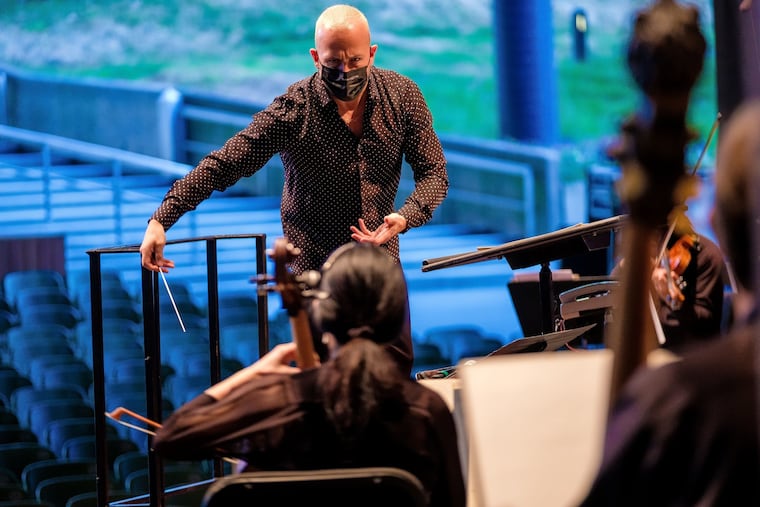The Philadelphia Orchestra, now online, has become a critical source of serenity
This week's online concert pairs pieces by Gabriela Lena Frank and Mendelssohn reaching across cultural boundaries.

Is there a more exquisitely peaceful sanctuary anywhere right now than the virtual one being built, week by week, by the Philadelphia Orchestra? This week’s concert, available starting Thursday night, isn’t long — only about 45 minutes — but it’s so beautifully executed and full of ideas it resonates far beyond the laptop.
Gabriela Lena Frank, the orchestra’s new composer-in-residence, pulls listeners into her warm, piquant sound world in three movements from her Leyendas: An Andean Walkabout for strings. It’s one of those works that reveals layers upon repeated hearings, which is just one advantage to this online format. I listened to it four or five times, each time fastening onto a different aspect.
This week’s “Digital Stage” presentation, led by music director Yannick Nézet-Séguin, delivers the orchestra’s fifth online concert of the season, and it’s not too soon to declare the ambitious start-up an enormous success. There is plenty of time later to worry about the tough financial model at play here. Artistically, though, the new format brings lessons about how to connect with listeners in a new media climate that should extend well beyond the orchestra’s someday-reunion with live audiences.
Last week’s concert operated on numerous levels. Vivian Fung’s Prayer brought a stunningly original compositional voice into the orchestra’s repertoire.
But the moment that really took my breath away was a sliver of silence. It came between Appalachian Spring and the Siegfried Idyll. Copland, in its delicate 13-player version, had died away. An exterior drone shot lifted up over the Mann Center shed with the Philadelphia skyline close by. And then the serenity of the Wagner began.
The sequence suggested meaning. Wagner’s score, written as a private gift to his wife, has a soft, pastoral shimmer. The camera move showed off the Mann as a vital urban-sylvan venue in as lovely a glamor shot as was ever designed. And the transition sent an unmistakable emotional message about everything good in our town. I’m not sure any other arts group is speaking for the city with quite this ardor in these unsettled times.
And yet, the orchestra isn’t turning its back on the serious issues of the day. This week’s streaming of Frank’s Leyendas, though completed two decades ago, is more relevant than ever. Written by the California composer after she connected with her Peruvian roots, Leyendas is a finely integrated statement about crossing cultures.
Here, the orchestra excerpted three of the piece’s six movements, and they formed a satisfying triptych. “Toyos” is inspired by the Andean panpipe, and "Himno de Zampoñas” emulates a kind of panpipe ensemble.
“Chasqui” is stylish and spirited, the scherzo of the group, meant to depict the Incan runner who traveled across the mountains. Nice twist: giving the double basses (along with cellos) the nimble job of carrying a low, melodic song.
Like Tchaikovsky, Bartok, or Schubert, Frank communicates even if you’re not familiar with her folk source material.
Reaching across borders for inspiration is part of a long classical continuum, a point made by pairing Frank with Mendelssohn’s Symphony No. 4, the “Italian.” Nézet-Séguin is a moderate in the piece, here and there with an individualized touch and fine ear for bringing out inner voices. One advantage of online over live is you can easily see who is playing what. Oboist Peter Smith was a great pleasure in the work, investing even a single sustained note with a life of its own.
And soon listeners will be able to see and hear incoming principal oboist Philippe Tondre, who has just come to town. First up, Nov. 12-15, is Dvorak’s Serenade for Winds, scored for only about a dozen players. So exposed is each part we should know exactly who he is within the first 30 seconds.
This week’s Philadelphia Orchestra program of Frank and Mendelssohn streams Thursday at 8 p.m. and is available through Nov. 1 at 11 p.m. at philorch.org. Tickets are $15.